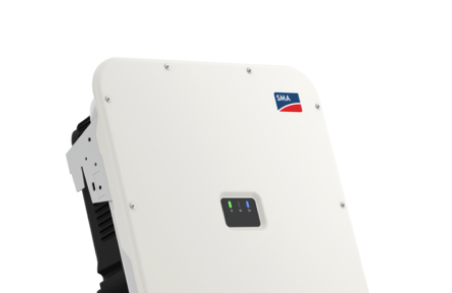Rapid Shutdown (RSD) is an application in photovoltaic (PV) inverters that allows for the remote and quick shutdown of the DC side string connections in a PV system. The device, also known as Rapid Shutdown Device (RSD), is designed to automatically disconnect each PV string connection in the event of grid faults or intentional disconnections, reducing the string voltage, eliminating high voltage in the system, and enhancing safety, usability, and practicality.
The safety regulations for photovoltaic inverters with Rapid Shutdown (RSD) require compliance with specific requirements in North America.
NEC 690.12 Rapid Shutdown of PV Systems on Buildings.
PV system circuits installed on or in buildings shall include a rapid shutdown function that controls specific conductors in accordance with 690.12(1) through (5) as follows.
(1) Requirements for controlled conductors shall apply only to PV system conductors of more than
1.5 m (5 ft) in length inside a building, or more than 3 m (10 ft) from a PV array.
(2) Controlled conductors shall be limited to not more than 30 volts and 240 volt-amperes within 10 seconds of rapid shutdown initiation.
(3) Voltage and power shall be measured between any two conductors and between any conductor and ground.
(4) The rapid shutdown initiation methods shall be labeled in accordance with 690.56(B).
(5) Equipment that performs the rapid shutdown shall be listed and identified.
According to the NEC 690.12 standard requirements, in the event of a utility power outage or when the inverter equipment is remotely shutdown, the Rapid Shutdown (RSD) device must initiate the shutdown sequence. Within a 10-foot radius of the photovoltaic array or within 5 feet of entering a building, the voltage of the photovoltaic system must decrease to below 30V within 10 seconds, and the power must decrease to below 240VA.
The principle of RSD (Rapid Shutdown) is as follows: The RSD system consists of a Rapid Shutdown Box and a Power Supply Box. The Shutdown Box is installed between the module array and the inverter and consists of two sets of normally open relays. The relays are powered by the Power Supply Box.
When the Rapid Shutdown system is activated, the Power Supply Box supplies power to the relays in the Shutdown Box. The relays, in response to the activation signal, quickly switch from their normally open position to the closed position, effectively disconnecting the PV module array from the inverter. This rapid disconnection reduces the voltage and power levels within the array, ensuring the safety of personnel working on or around the system.
The Rapid Shutdown system operates by coordinating the activation signal, the Power Supply Box, and the relays in the Shutdown Box to achieve a fast and reliable disconnection of the PV system.
The disconnection methods of RSD (Rapid Shutdown) are categorized into two modes: passive and active.
Passive mode: When there is a grid outage triggering islanding protection, the power supply to the control box is cut off. The relays in the shutdown box cease operation, disconnecting each PV string from the inverter equipment to prevent electrical current flow.
Active mode: In case of an emergency grid fault or personnel electrocution, the emergency control switch on the control power box can be manually pressed to cut off the power supply to the shutdown box. This action isolates the electrical connection of the system, preventing the fault from spreading and escalating. Additionally, the status information of the rapid shutdown box is transmitted to the inverter equipment.
Application of RSD (Rapid Shutdown):
The main feature of the Rapid Shutdown system is the ability to quickly disconnect the electrical connections between the devices, the grid, and the PV modules, ensuring a rapid disconnection of the electrical system in case of faults and protecting the safety of the modules and equipment. It minimizes the risk of electrical contact and significantly increases the safety of the system, making it particularly suitable for use in distributed residential systems.
The RSD intelligent PV panel shutdown device can independently switch the rooftop PV system to a safe state. It prevents fatal electric shocks during installation, maintenance, or hazardous situations, ensuring personal safety. Rooftop PV systems can generate DC high voltages of up to 1000V, making it difficult to disconnect the DC input side of the system. In the event of system damage, personnel on-site are exposed to high safety risks. The PV panel shutdown device monitors the current and voltage on the DC input side of the system. Any abnormal operating conditions or inverter shutdown can trigger an automatic shutdown of the PV panels. Once the environment is deemed safe again, the system will automatically restart.
NEC 690.12 Rapid Shutdown of PV Systems on Buildings.
PV system circuits installed on or in buildings shall include a rapid shutdown function that controls specific conductors in accordance with 690.12(1) through (5) as follows.
(1) Requirements for controlled conductors shall apply only to PV system conductors of more than
1.5 m (5 ft) in length inside a building, or more than 3 m (10 ft) from a PV array.
(2) Controlled conductors shall be limited to not more than 30 volts and 240 volt-amperes within 10 seconds of rapid shutdown initiation.
(3) Voltage and power shall be measured between any two conductors and between any conductor and ground.
(4) The rapid shutdown initiation methods shall be labeled in accordance with 690.56(B).
(5) Equipment that performs the rapid shutdown shall be listed and identified.









